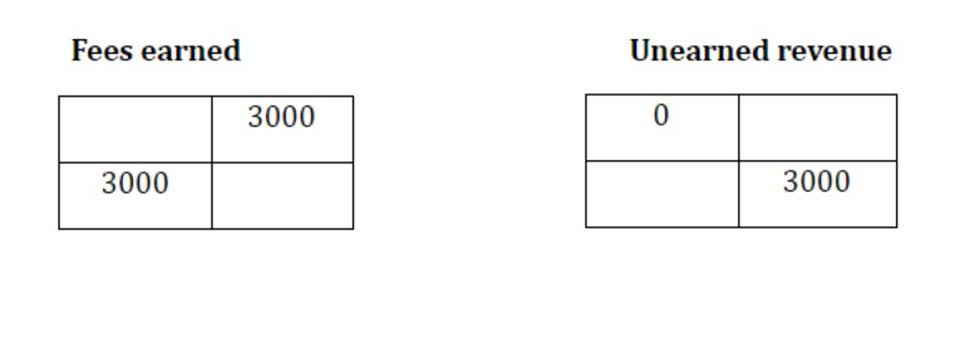
Companies having high DPO can use the available cash for short-term investments and to increase their working capital and free cash flow (FCF). However, higher values of DPO may not always be a positive for the business. The company may also be losing out on any discounts on timely payments, if available, and it may be paying more than necessary. If you send out a message and still haven’t heard back or received payment after a few days, it’s time to give your customer a ring.
- On your reconciliation sheet, outstanding checks are often subtracted from your balance per bank because these withdrawals have not yet happened but are simply a timing matter.
- Compass sold and issued 10,000 shares to the original investor who founded the company.
- We’ll explain how to pass a journal entry for outstanding expenses in this article.
- By contrast, days sales outstanding (DSO) is the average length of time for sales to be paid back to the company.
- It is common practice to refer to part-time jobs, jobs with variable hours, and jobs with repetitive duties as wages instead of salaries.
- By quickly turning sales into cash, a company has a chance to put the cash to use again more quickly.
If the Check Is Older Than Six Months
In his free time, you’ll find Jason on the basketball court, travelling, and spending quality time with family. When a customer is entering late fee territory, you could give them a call and offer to waive the fee if they pay right away. Offering a grace period for the first time is a great way to stay on good terms with the customer in case of a simple mistake on their end. Liabilities that are generally expected to be settled within the current accounting year (usually 12 months) are called current liabilities. At the end of the period, this “expense due but not paid” impacts the financials of the business. The amount not paid by Company-A on 10th Dec is termed as “Outstanding Rent” in the current year (a classic example of an outstanding expense).
If the Check Is Less Than Six Months Old
In our example, we’re calculating DSO for the quarter, so we’ll need to add together the number of days in each month. To understand the significance of DSO, let’s review some familiar accounting terms. Learn how to calculate the DSO for your business and what the results of that calculation mean. DSO may vary consistently on a monthly basis, particularly if the company’s product is seasonal. If a company has a volatile DSO, this may be cause for concern, but if its DSO regularly dips during a particular season each year, it could be no reason to worry.
What are the risks of a high DSO?

Days sales outstanding is an accounting ratio you can easily calculate to determine how many days it’s taking your customers to pay you. For newer businesses, or businesses that have limited cash flow, not tracking your DSO can have serious repercussions, including bankruptcy. Days sales outstanding (DSO) measures the average number of days it takes a business to collect payment from their customers. Similar to the accounts receivable turnover ratio, the DSO ratio can be measured monthly, quarterly, or annually, depending on the volume of credit sales your company has. For instance, for work completed in June, a business may owe $100,000 to its employees and will enter that amount as debit in the salary expenses account.
Outstanding Business Checks
The benefits of such expenses have been consumed although due to some reason they are not outstanding check definition paid. We’ll explain how to pass a journal entry for outstanding expenses in this article. An overdue invoice is an invoice a company has yet to pay and is past the invoice due date. These invoices might carry a penalty late fee that customers must pay in full along with the originally invoiced total. Past-due payments usually appear on a company’s accounts payable report and often appear on the top. An outstanding check represents a payment that has been written but not yet cleared by the bank.

Days Sales Outstanding (DSO): Meaning in Finance, Calculation, and Applications
To calculate the number of outstanding shares, we need to know the issued shares, the repurchased shares (treasury shares), and the shares that the managing partners take (restricted shares). Days Sales Outstanding (DSO) is an essential financial metric that measures the average number of days a company takes to collect payment after a sale. While it provides valuable insights into a company’s cash flow efficiency, DSO comes with notable limitations that investors need to consider.
No matter when the payment is made, this type of expense is recorded in the books of accounts when it is incurred. The purpose of the repurchase can also be to eliminate the shareholder dilution that will occur from future ESOs or equity grants. The number of shares outstanding increases whenever a company undertakes a stock split. Stock splits are usually undertaken to bring the https://www.bookstime.com/ share price of a company within the buying range of retail investors; the increase in the number of outstanding shares also improves liquidity. DSO is typically calculated monthly or quarterly to provide timely insights into accounts receivable performance and cash flow management.
- The ratio is typically calculated on a quarterly or annual basis, and it indicates how well the company’s cash outflows are being managed.
- A high DPO can indicate a company that is using capital resourcefully but it can also show that the company is struggling to pay its creditors.
- In another version, the average value of beginning AP and ending AP is taken, and the resulting figure represents the DPO value during that particular period.
- In the above example, if the reporting periods were each half of a year, the resulting weighted average of outstanding shares would be equal to 150,000.
- Single-entry bookkeeping is less complicated than double-entry and may be adequate for smaller businesses.
- For instance, a 2-for-1 stock split reduces the price of the stock by 50%, but also increases the number of shares outstanding by 2x.
- If you sell to customers on credit, knowing your days sales outstanding is important since the collection rate directly impacts cash flow and overall company profitability.
- The statement of account acts as a report issued by a vendor that captures the financial transaction history between two businesses within a specific date range.
- Like any metric measuring a company’s performance, DSO should not be considered alone, but rather should be used with other metrics.
- A sharp increase in DSO can cause a company serious cash flow problems.
- If you’re looking for a way to get paid more quickly, manage the invoicing process easily, and remain in good standing with your clients while doing it, modern tools are a must.
- If any late fees apply, as noted in your initial agreement, include them on the overdue invoice as well.
Print or digitally prepare the same invoice again, adding an ‘overdue’ stamp or watermark to the page. If any late fees apply, as noted in your initial agreement, include them on the overdue invoice as well. You can also send the original invoice in a payment request email, with or without the “overdue” watermark. Reason – The logic of why payment due for an expense is treated as a liability by the business is because the benefit in exchange for the payment is already received. It is the obligation and responsibility of the business to pay them off. If the indirect method is used, the cash flow from the operations section is already presented as a reconciliation of the three financial statements.

How can a company improve its DSO?
The answer to certain tax and accounting issues is often highly dependent on the fact situation presented and your overall financial status. However, in day-to-day accounting vocabulary, a “debt” may be referred to as long-term debt i.e. an obligation that is payable beyond 12 months. They are an obligation for the business and therefore treated as a liability. The accounting rule applied is “credit the increase in liability” and “debit the increase in expense” (modern rules of accounting). Outstanding expenses will not record base on the invoice bill from supplier. Sometimes What is bookkeeping the supplier bill invoice before/after the customer using the service or receiving goods.